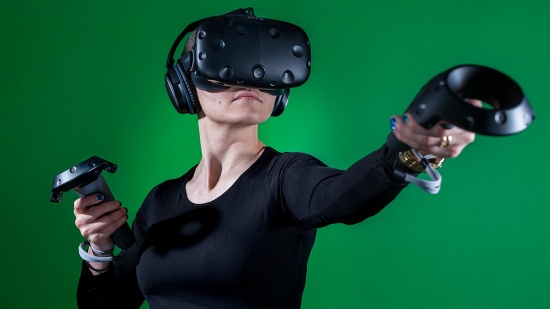About HTC Vive
Basics
HTC Vive is a virtual reality headset developed by HTC and Valve Corporation. This headset is designed to utilize "room scale" technology to turn a room into 3D space via sensors, with the virtual world allowing the user to navigate naturally, with the ability to walk around and use motion tracked handheld controllers to vividly manipulate objects, interact with precision, communicate and experience immersive environments.
Development Kit 1 and the Development Kit 2, before releasing the most recent Consumer version. We currently have the DK2 at the Interaction Station available for use.
Compatibility
1. The Oculus Rift is currently not compatible with any Mac system.
2. The Oculus Rift Development Kit 2 is not officially compatible with Oculus Home, the distribution network that is packaged with the Oculus Rift Consumer version, which provides mainstream Oculus VR content. However, it is still possible to access and run this content from Oculus Home with the DK2, although small issues may arise and some content may not work properly. It is also still possible to download VR content specifically for the DK2 on platforms such as STV.RE, The Rift Arcade and Virtual Desktop.
3. The most common software used to develop virtual environments for the Oculus Rift are Unity and Unreal game engines. Both are installed on the computers at the Interaction Station and are also free to download and use at home (see Working with Oculus Rift DK2 and Unity 5.x about compatibility specifics for using Unity 5 with the Oculus Rift DK2). One typically uses Unity or Unreal in combination with modeling programs such as Maya, Cinema 4D or Rhino. You do not need the Oculus Rift headset to model or program the virtual environments - only to view them. See Tutorials below for entry-level tutorials on creating virtual environments for the Oculus Rift.
